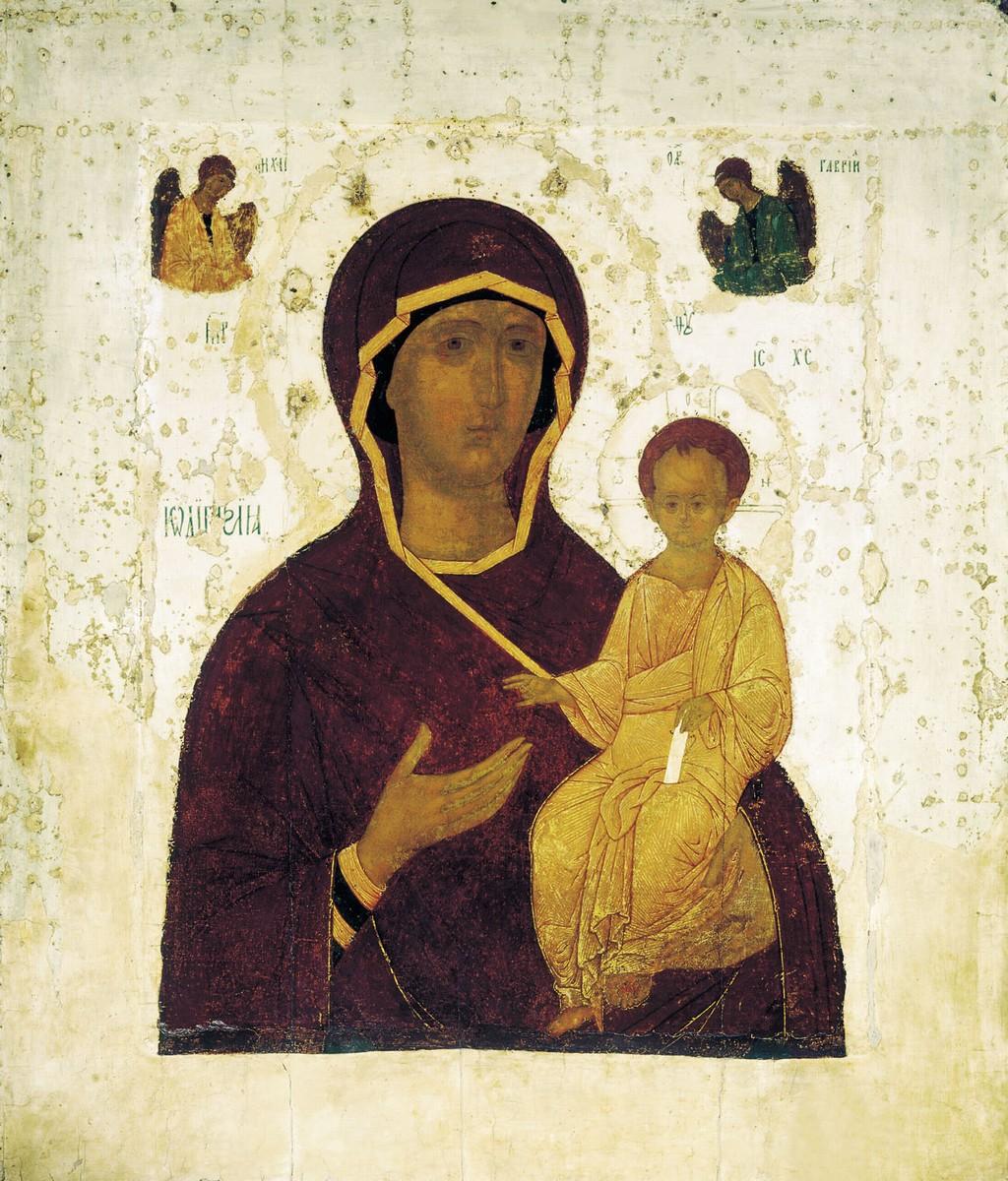|
Santa Trinita Maestà
The ''Santa Trinita Maestà'' (Italian: ''Maestà di Santa Trinita'') is a panel painting by the Italian medieval artist Cimabue, dating to c. 1290-1300. Originally painted for the church of Santa Trinita, Florence, where it remained until 1471, it is now housed in the Uffizi Gallery of Florence, Italy. It represents the Madonna enthroned with the Baby Jesus and surrounded by eight angels and, below, four half portraits of prophets. History The commissioning client of the painting is unknown, but they could have been a member of the order of Vallombrosians, who governed the Santa Trinita at the time, or a member of another religious order that intended the painting for another destination. According to Vasari's testimony in his ''Lives'', the work remained at the Santa Trinita until 1471, when it was replaced by the ''Trinitá'' of Alesso Baldovinetti and transferred to a side chapel of the church, since it was less respected than the newer Renaissance paintings. Over the y ... [...More Info...] [...Related Items...] OR: [Wikipedia] [Google] [Baidu] |
Cimabue
Cimabue (; ; – 1302), Translated with an introduction and notes by J.C. and P Bondanella. Oxford: Oxford University Press (Oxford World’s Classics), 1991, pp. 7–14. . also known as Cenni di Pepo or Cenni di Pepi, was an Italian painter and designer of mosaics from Florence. Although heavily influenced by Byzantine models, Cimabue is generally regarded as one of the first great Italian painters to break from the Italo-Byzantine style. While medieval art then was scenes and forms that appeared relatively flat and highly stylized, Cimabue's figures were depicted with more advanced lifelike proportions and shading than other artists of his time. According to Italian painter and historian Giorgio Vasari, Cimabue was the teacher of Giotto, the first great artist of the Italian Proto-Renaissance. However, many scholars today tend to discount Vasari's claim by citing earlier sources that suggest otherwise. Life Little is known about Cimabue's early life. One source that reco ... [...More Info...] [...Related Items...] OR: [Wikipedia] [Google] [Baidu] |
Hodegetria
A Hodegetria , ; russian: Одиги́трия, Odigítria ; Romanian: Hodighitria, or Virgin Hodegetria, is an iconographic depiction of the Theotokos (Virgin Mary) holding the Child Jesus at her side while pointing to him as the source of salvation for humankind. The Virgin's head usually inclines towards the child, who raises his hand in a blessing gesture. In the Western Church this type of icon is sometimes called Our Lady of the Way. The most venerated icon of the Hodegetria type, regarded as the original, was displayed in the Monastery of the Panaghia Hodegetria in Constantinople, which was built specially to contain it. Unlike most later copies it showed the Theotokos standing full-length. It was said to have been brought back from the Holy Land by Eudocia, the wife of emperor Theodosius II (408–450), and to have been painted by Saint Luke the apostle himself. The icon was double-sided, with a crucifixion on the other side, and was "perhaps the most prominent ... [...More Info...] [...Related Items...] OR: [Wikipedia] [Google] [Baidu] |
Maestà (Cimabue)
The ''Maestà'' is a painting by the Italian artist Cimabue, executed around 1280 and housed in the Musée du Louvre in Paris. History It was acquired by the Louvre in 1813 as part of the Napoleonic spoliation of artworks in Italy, together with Giotto's '' Saint Francis Receiving the Stigmata'', also from the church of San Francesco in Pisa Pisa ( , or ) is a city and ''comune'' in Tuscany, central Italy, straddling the Arno just before it empties into the Ligurian Sea. It is the capital city of the Province of Pisa. Although Pisa is known worldwide for its leaning tower, the ci .... Description The work is considered to be from around 1280, thus preceding the '' Santa Trinita Maestà''. It is also stylistically earlier to that work, being painted without pseudo-perspective, and having the angels around the Virgin simply placed one above the other, rather than being spatially arranged. The throne is similar to the ''Maestà'' painted by Cimabue in the Basilica of San Fra ... [...More Info...] [...Related Items...] OR: [Wikipedia] [Google] [Baidu] |
Cimabue 035
Cimabue (; ; – 1302), Translated with an introduction and notes by J.C. and P Bondanella. Oxford: Oxford University Press (Oxford World’s Classics), 1991, pp. 7–14. . also known as Cenni di Pepo or Cenni di Pepi, was an Italian Italian(s) may refer to: * Anything of, from, or related to the people of Italy over the centuries ** Italians, an ethnic group or simply a citizen of the Italian Republic or Italian Kingdom ** Italian language, a Romance language *** Regional Ita ... painter and designer of mosaics from Florence. Although heavily influenced by Byzantine models, Cimabue is generally regarded as one of the first great Italian painters to break from the Italo-Byzantine art, Italo-Byzantine style. While medieval art then was scenes and forms that appeared relatively flat and highly stylized, Cimabue's figures were depicted with more advanced lifelike proportions and shading than other artists of his time. According to Italian painter and historian Giorgio Vasari, C ... [...More Info...] [...Related Items...] OR: [Wikipedia] [Google] [Baidu] |


